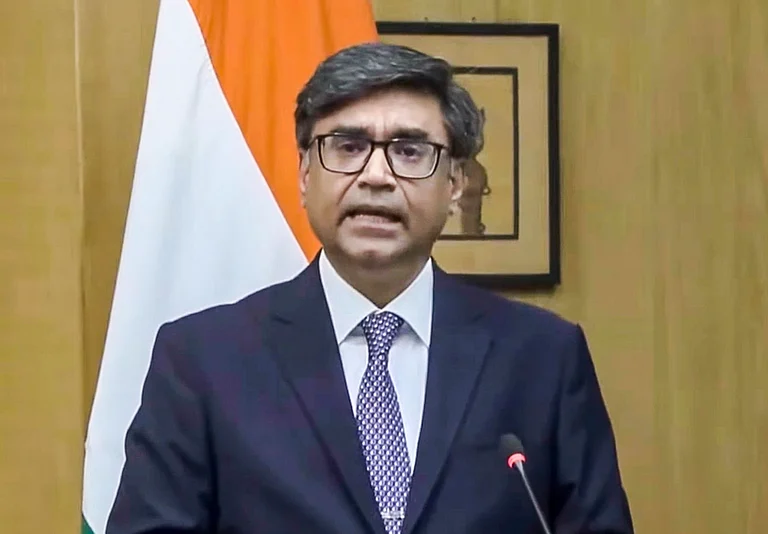On April 22, 2025, the serenity of Pahalgam, Kashmir, was shattered. Nestled in the pine-laced folds of Kashmir, the pilgrimage town became the site of a massacre — 27 Hindu tourists were gunned down in an attack at Baisaran meadow that was as brutal as it was symbolic. It wasn’t merely another strike in a long war of attrition. It was a message.
Missiles Over Memory: Indo-Pak War And The Red Lines Of Retaliation
In the age of televised vengeance, the real threat to South Asia is not war — but the slow unravelling of its peace.
That message, received with shock and fury across India, demanded a reply. In the early hours of May 8, the Indian government delivered it — a calibrated missile strike, codenamed 'Operation Sindoor', targeting militant infrastructure across the Line of Control (LOC) in Pakistan-administered territory. Precision was emphasised. Collateral damage, reportedly minimised. The tone: resolute.
But behind the steely optics of retribution lies a fragile geopolitical calculus. As the smoke clears, a deeper question lingers — what does this moment tell us about the new language of warfare in South Asia? And where does justice end and spectacle begin?
The Age of the Televised Counter Strike
India라이브 바카라 May 8 operation is the third in a growing pattern of kinetic, media-savvy military responses to terror. From the 2016 'surgical strikes' post-Uri to the 2019 Balakot air raids following the Pulwama bombing, and now Operation Sindoor, the Indian state has evolved a doctrine of punitive precision — calculated, constrained, and cinematic.
The grammar of war has changed. Today라이브 바카라 retaliation is not merely strategic; it is performative. It unfolds in real-time, amplified by hashtags, press briefings, and war-room simulations broadcast to a prime-time audience. The border is no longer just a line of conflict — it is a theatre. And every operation is a script. Yet, while the narrative may feel novel, the risks are old — and growing.
Between Myth and Missile
'Sindoor', the name of the operation, carries layered symbolism. In Hindu tradition, it denotes marital commitment, the red mark worn by married women. In the context of Pahalgam — where many women suffered grievous loss — it also evokes sacrifice and loss. The name plays on national emotions: grief, honour, vengeance.
This fusion of religious metaphor and military action is no coincidence. It reflects the ideological currents running through India라이브 바카라 current political establishment, where statecraft often coexists with sanctified nationalism. In this framing, military strikes are not just about neutralising threats; they are acts of moral restoration.
But such sanctification comes at a cost. When retaliation is cloaked in civilisational righteousness, nuance erodes. Diplomacy recedes. War becomes an expression of virtue, not just violence.
The Illusion of Controlled Escalation
India라이브 바카라 belief in limited war rests on a dangerous assumption — that nuclear thresholds can be navigated with precision, that escalation can be calibrated like a thermostat. But the subcontinent라이브 바카라 strategic environment offers no such guarantees. There are no robust crisis-management mechanisms between India and Pakistan. No working hotlines. No shared understanding of thresholds. Only mutual suspicion, reactive politics, and deeply polarised media ecosystems. In this brittle space, one misstep can ignite a spiral.
Each strike raises the stakes. Each successful retaliation invites the illusion of repeatability. But war — unlike theatre — does not always follow a script.
Diplomacy in Retreat
While India flexes its military muscle, its diplomatic engagement with Pakistan remains frozen. The backchannels that once whispered peace have gone silent. Regional dialogues have stalled. Even Track II exchanges — once the oxygen of subcontinental sanity — have withered. Meanwhile, China quietly deepens its grip on South Asia라이브 바카라 periphery. Bangladesh voices private discomfort over India라이브 바카라 hardening communal undertones. Nepal drifts. Sri Lanka pivots toward Beijing라이브 바카라 purse. India, long seen as the regional balancer, now risks becoming the loner in its own backyard. In this context, missile diplomacy signals not strength, but the exhaustion of statesmanship.
Retaliation Without Resolution
No one disputes the horror of Pahalgam. It was a crime against the innocent, an assault on the fabric of shared belief. But the question remains: what kind of justice endures? Missiles may deliver short-term punishment. They may appease public sentiment and recalibrate deterrence. But they do not dismantle terror ecosystems, nor do they address the ideological soil in which extremism grows. And they certainly do not restore long-term peace in a region wired for instability. Justice, in a democracy, is not about spectacle. It is about systems. Prosecutions, investigations, cooperation — these are the unsung pillars of counterterrorism. They lack grandeur. But they build peace.
The Real Red Line
In the end, the gravest risk is not that India and Pakistan will stumble into war. It is that both states may normalise acts of limited aggression as routine diplomacy. That missile strikes become predictable. That revenge becomes policy. The red line is not just geographic. It is ethical. Strategic. Civilisational. It lies between justice and vengeance, between governance and theatre, between defending democracy and performing it.
Pahalgam cannot be forgotten. But neither can we afford to remember it only through the lens of retribution. A nation라이브 바카라 greatness lies not in its capacity to strike — but in its ability to restrain, to lead, to imagine a peace that outlives its pain.
(Author's Bio: Debashis Chakrabarti is a political columnist and a former Commonwealth Fellow, UK)



